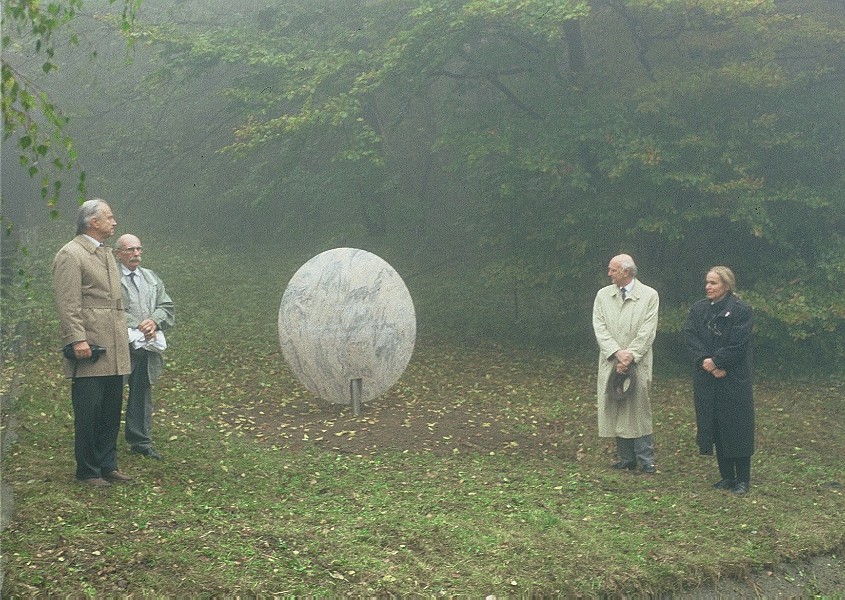Béla A. Balázs
Department of Astronomy
Under the directorship of László Detre, the Konkoly Observatory of the Hungarian Academy of Sciences has established a mountain station (on one of the highest points of Hungary) and has acquired three new telescopes. The building operations of the Piszkéstetö Mountain Station (Figs. 1-4) started in 1958, their financial backing was provided by the Hungarian government. The completion of the main building took its turn in September 1960 and the dome of the Schmidt telescope was finished in 1961. The new telescope took up its duties in 1962. Detre was the originator and first leader of the Mountain Station. The realization of the project for itself was a great service to Hungarian science and it is really sorrowful that Detre could not live to see completion of this undertaking. The building up of the Station was finished in 1974 - with the installation of the 1 m RCC telescope - and since that time there has not been any significant astronomical building or instrumental investments in our country.
The 120/180 cm Schmidt telescope of the Palomar Observatory was completed in 1948 (and for many years it was the largest Schmidt telescope in the world). One year later, the new wide-angle telescope starts the first Palomar Observatory Sky Survey, which maps the entire northern sky and a major share of the southern heavens as well (up to the 21st magnitude). The resulted Palomar Sky Survey Atlas is an indispensable tool of the astronomical investigations up to the present day.
This fact probably played a major role in the decision concerning the infrastructural facilities; consequently the first main acquisition was a 60/90 cm Schmidt telescope equipped with two (a 2o and a 5o) full aperture objective prisms (Figs. 5-7).
The installation of a 50 cm Cassegrain telescope was a logical extension of the instrumentation of the mountain station. The telescope arrived during the summer of 1966 and (as in the case of the Schmidt unit) it was assembled and examined by a team of Zeiss technicians in a new dome (Figs. 8-9). With the aid of a cooled UBV photoelectric photometer it became feasible to utilize the more favourable conditions of the mountain sky in the field of photoelectric photometry.
The last and at the same time largest building and instrumental investment at the mountain station was the installation of a 1 m RCC telescope (produced likewise by Carl Zeiss Jena). The guidance of the telescope and the data acquisition was solved by a CAMAC module and a small TPAi computer (KFKI products). The new facilities - including the `home-made' photoelectric photometer - reassuringly matched the world-standard of that time and made possible the undertaking of more ambitious projects.
It is well known that Detre was fully aware of the importance of the observations. Perhaps observing was the only affair he took really seriously. But fate was not on his side: he could not live to see the completion of the truly remarkable 1 m RCC project. He died in 1974 when he was only at the age of 68. It is our honouring duty to worthily recall to mind the exceptional lifes work of László Detre, to keep his memory alive and continue his tireless efforts (Figs. 10-13).
The PPT version of the memorial lecture delivered is available at the author's
home page: http://astro.elte.hu/~bab/bb.html .
Loránd Eötvös University
Budapest, Hungary 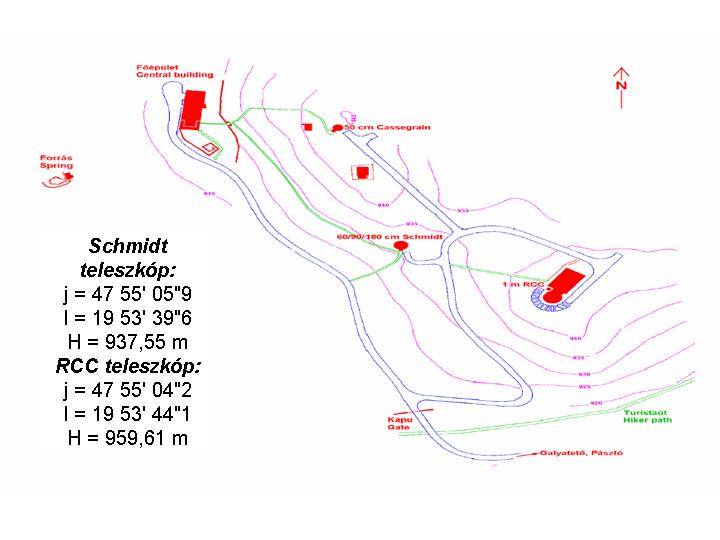
Sketch-map of the mountain station
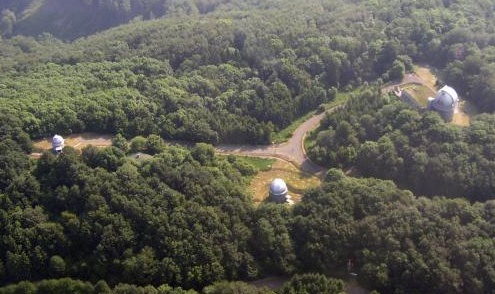
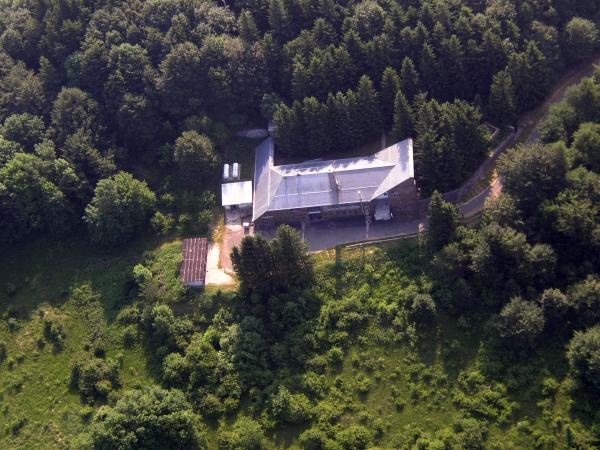
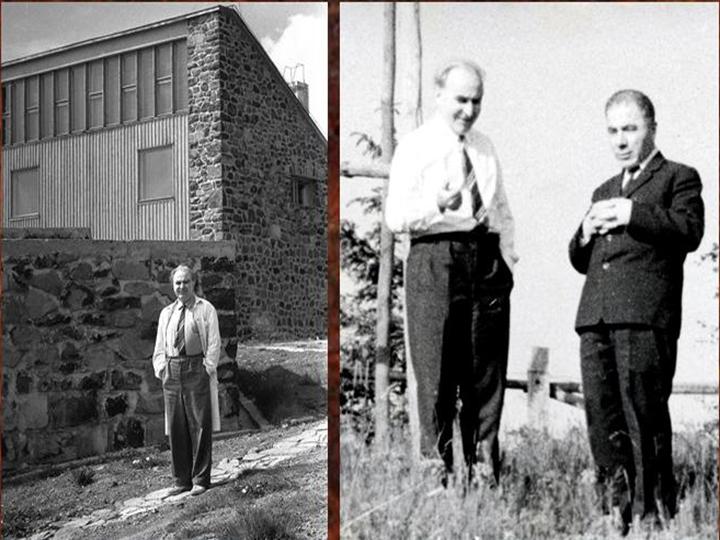
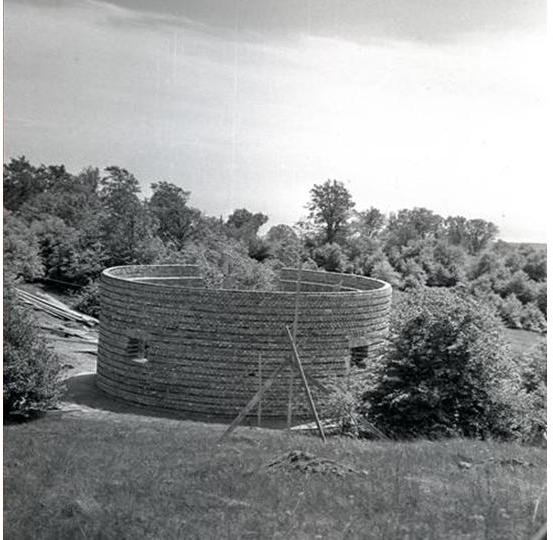
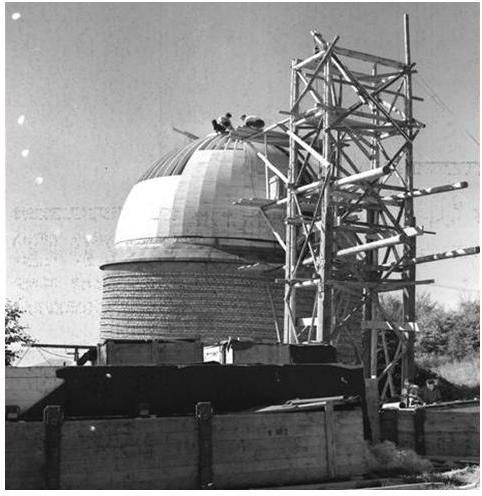
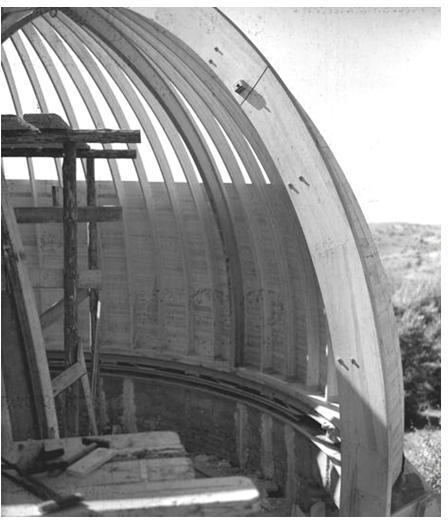
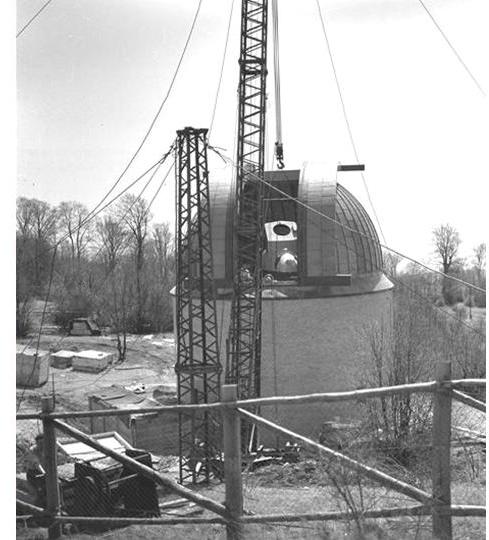
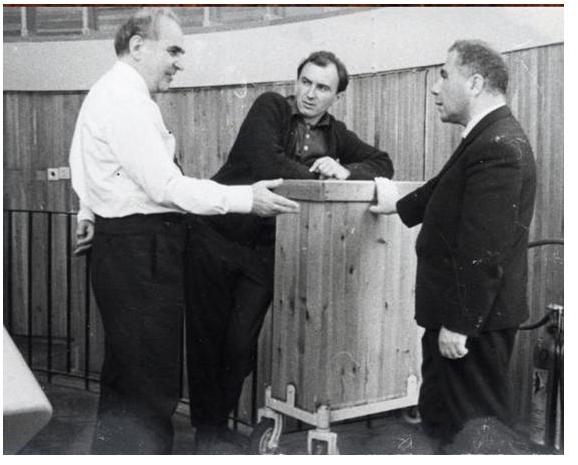
László Detre (left), Viktor Ambartsumian (right), and the author in the Schmidt dome
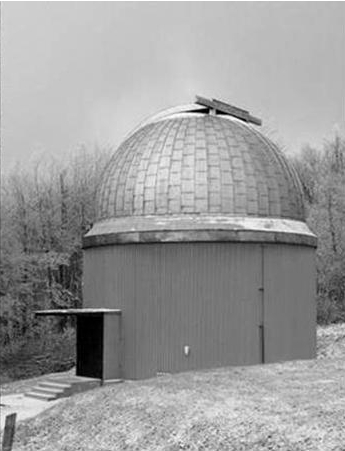
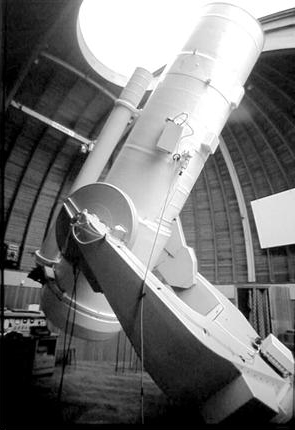
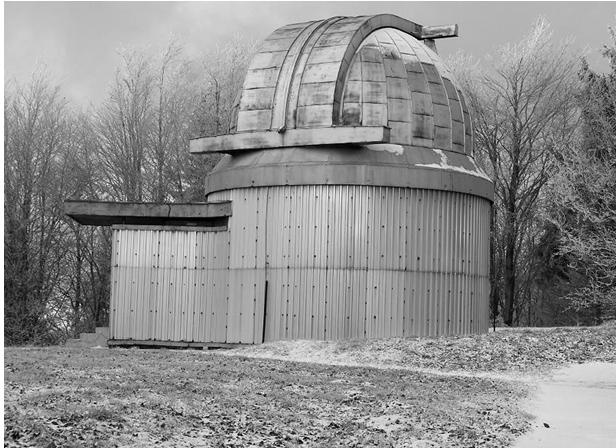
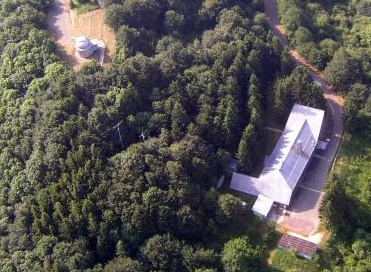
The dome of the 50 cm telescope and its aerial view (with the main building)
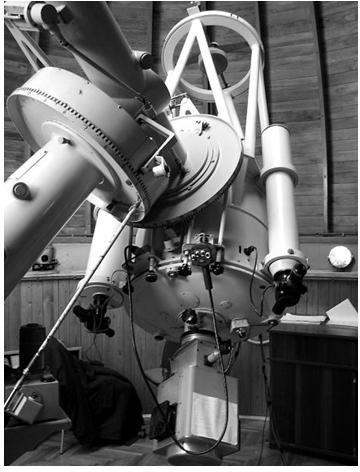
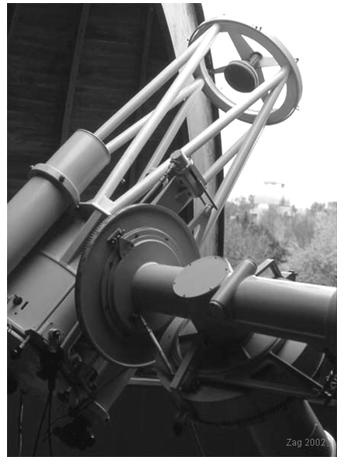
Two views of the 50cm Cassegrain telescope. Main features:
Manufacturer: Carl Zeiss Jena;
Year of installation: 1966;
Focal length: 7500 mm
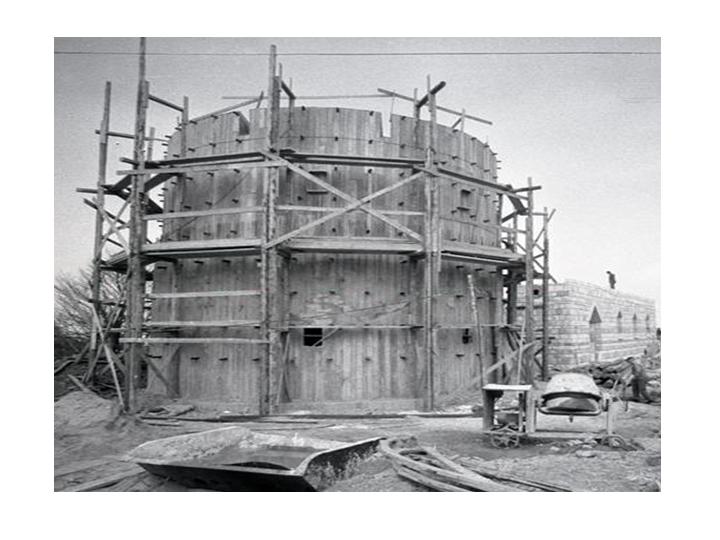
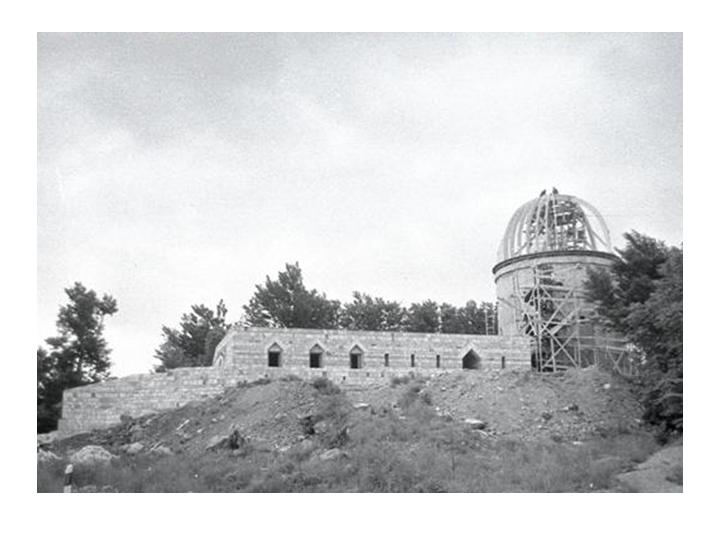
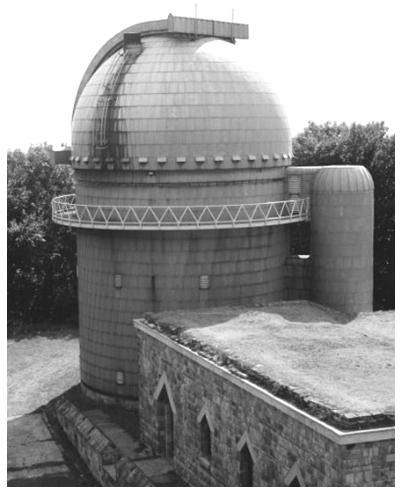
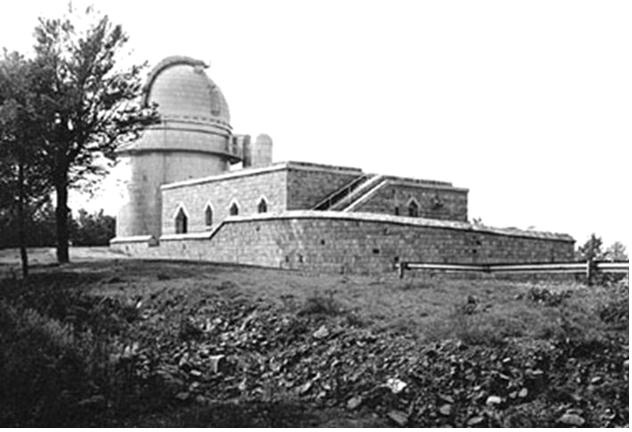
Two views of the RCC building
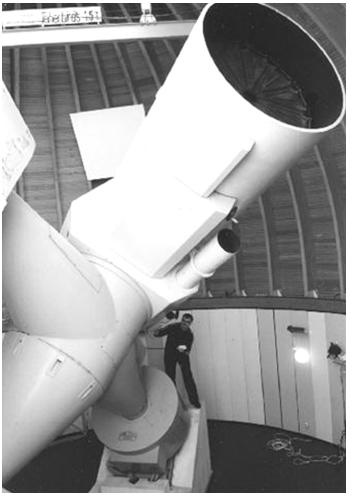
The 1 m RCC telescope. Main features:
Manufacturer: Carl Zeiss Jena;
Year of installation: 1974;
Focal length: 13500 mm
